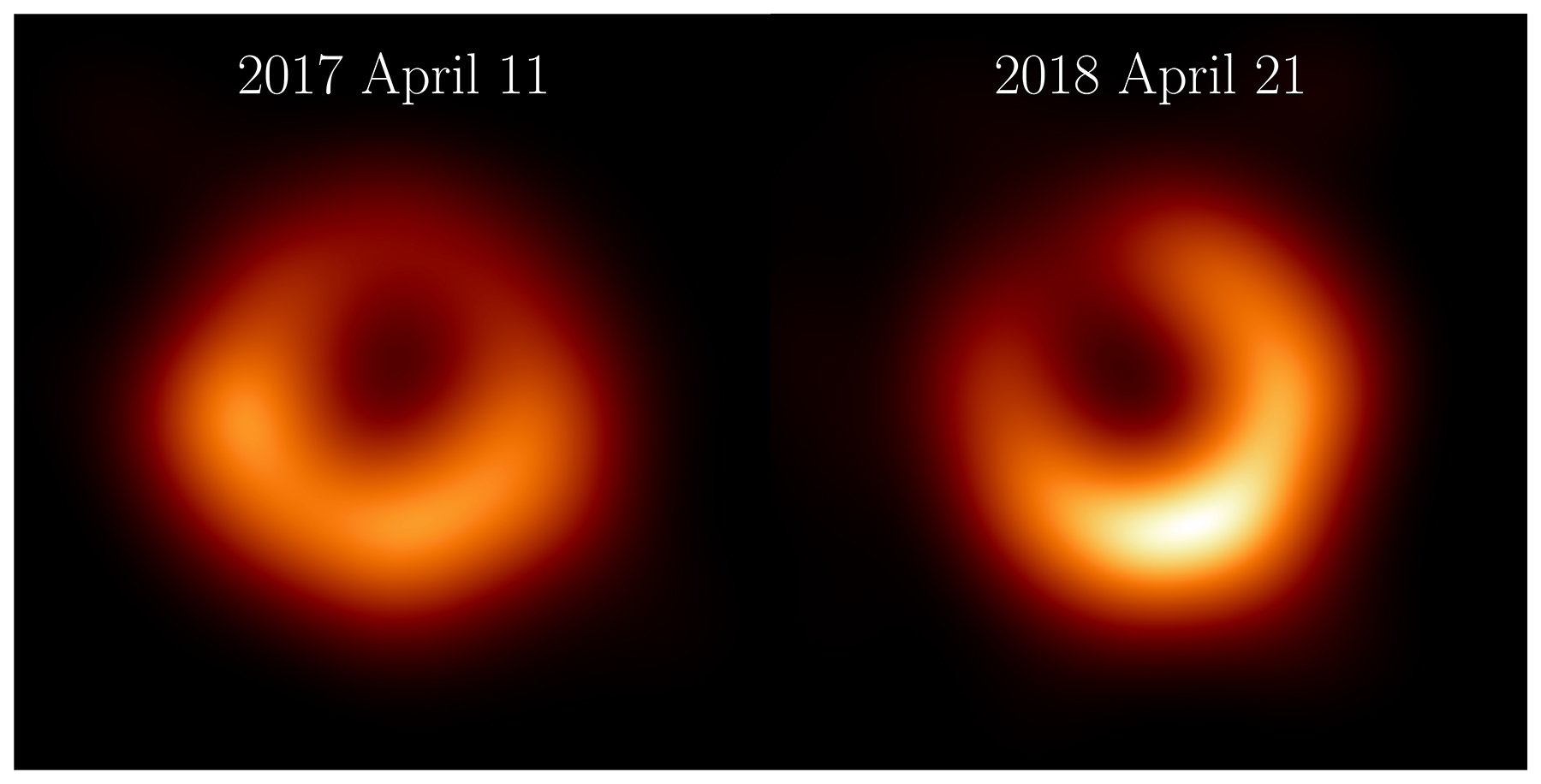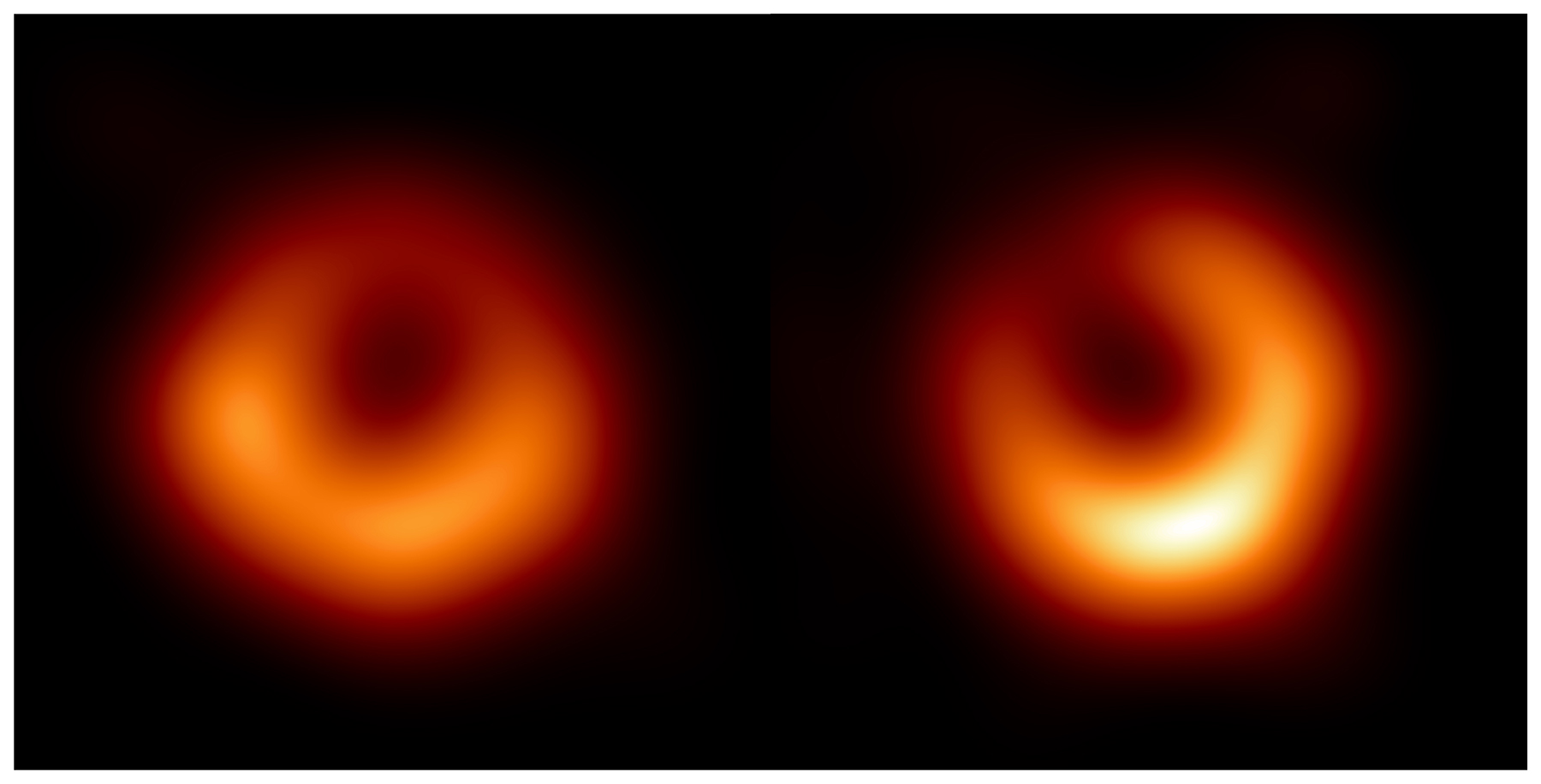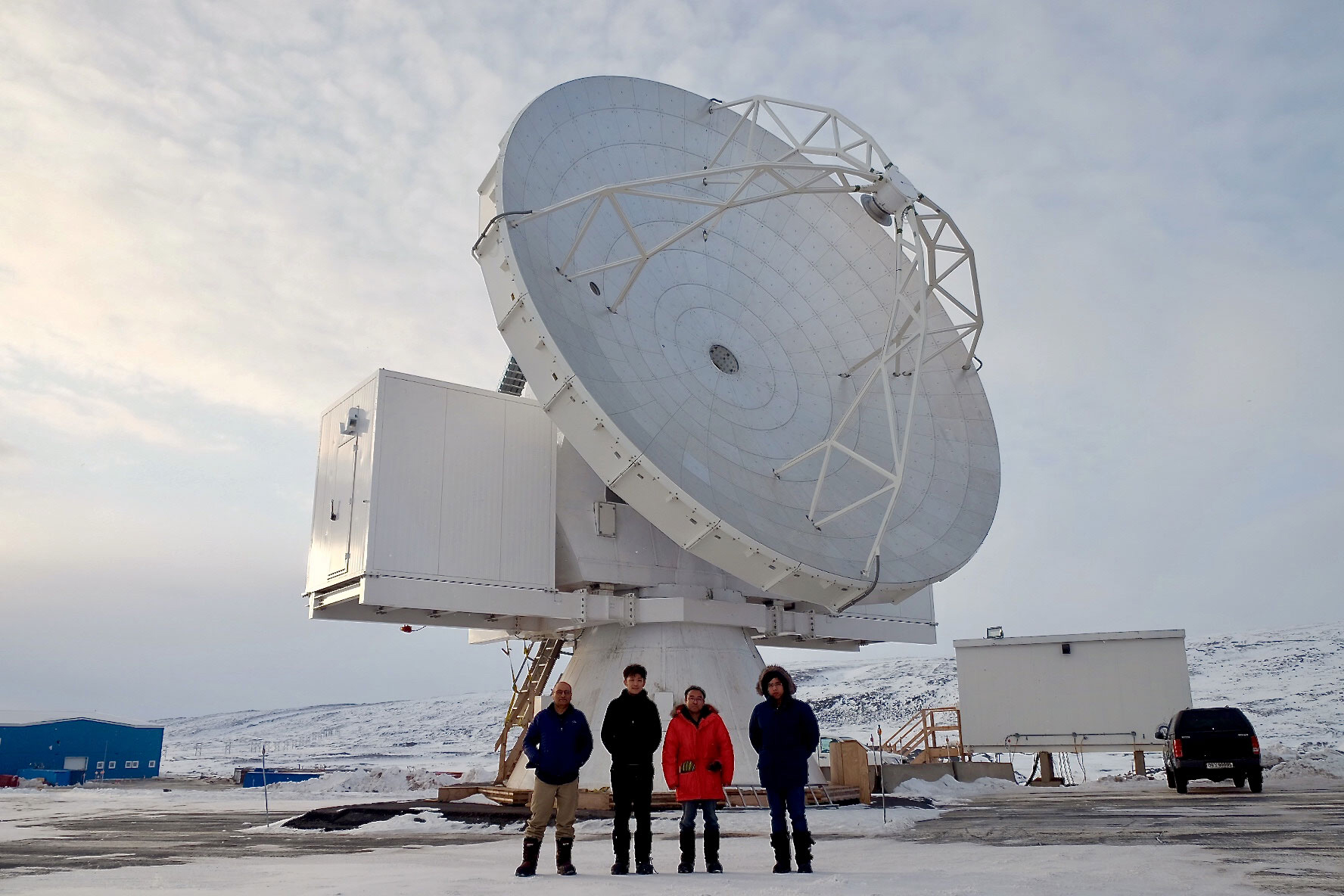Image List
-

The Event Horizon Telescope Collaboration has released new images of the supermassive black hole M87*, from observations taken in April 2018. These observations took place one year after the first observations in April 2017, and they include new participation from the Greenland Telescope. Analysis of the new data reveal a familiar bright ring of emission of the same size as was found in 2017. However, some of the ring features have changed so that its brightest part now appears shifted by about 30 degrees. The dark central region that is interior to the ring still remains as a signature of the supermassive black hole.
Credit: EHT Collaboration -

(Unlabeled image) The Event Horizon Telescope Collaboration has released new images of the supermassive black hole M87*, from observations taken in April 2018. These observations took place one year after the first observations in April 2017, and they include new participation from the Greenland Telescope. Analysis of the new data reveal a familiar bright ring of emission of the same size as was found in 2017. However, some of the ring features have changed so that its brightest part now appears shifted by about 30 degrees. The dark central region that is interior to the ring still remains as a signature of the supermassive black hole.
Credit: EHT Collaboration -

Observers at the Greenland Telescope (GLT), soon after the completion of the EHT run in April 2018. From left to right the observers are Nimesh Patel (SAO), Keiichi Asada (ASIAA), Hiroaki Nishioka (ASIAA), and Chen-Yu Yu (ASIAA). The 12-m diameter GLT antenna is located at the Pituffik Space Base in Greenland. In 2011, the National Science Foundation and Associated Universities, Inc. (AUI)/NRAO awarded this antenna to the SAO, for relocation to Greenland. The GLT project is a collaboration between SAO and ASIAA.
Image credit: Nimesh Patel